New Rockefeller Library exhibition spans 18th-century beginnings to 1930s reconstruction
The Rockefeller Library has opened a new exhibit to celebrate the 85th anniversary of the opening of the Governor’s Palace in April 1934. Titled “An Elegant Seat:” Building and Re-Building the Governor’s Palace, the exhibit is a collaborative effort between library and museum collections staff. It features four cases focusing on the themes of colonial governors, archaeology, architecture, and the reconstruction, and opening. A combination of manuscripts, archaeological artifacts, architectural fragments, architectural drawings, photographs, reports, memos, and postcards chronicle the story of the Palace from its 18th-century beginnings through its reconstruction in the 1930s.
The House of Burgesses agreed to fund building of a residence for the royal governor in 1706. Henry Cary, who had recently completed the Capitol and the Public Gaol, oversaw its construction. Work progressed slowly and Lieutenant-Governor Alexander Spotswood, who arrived in 1710, found only the brick shell underway, and moved into a partially completed structure in 1716.
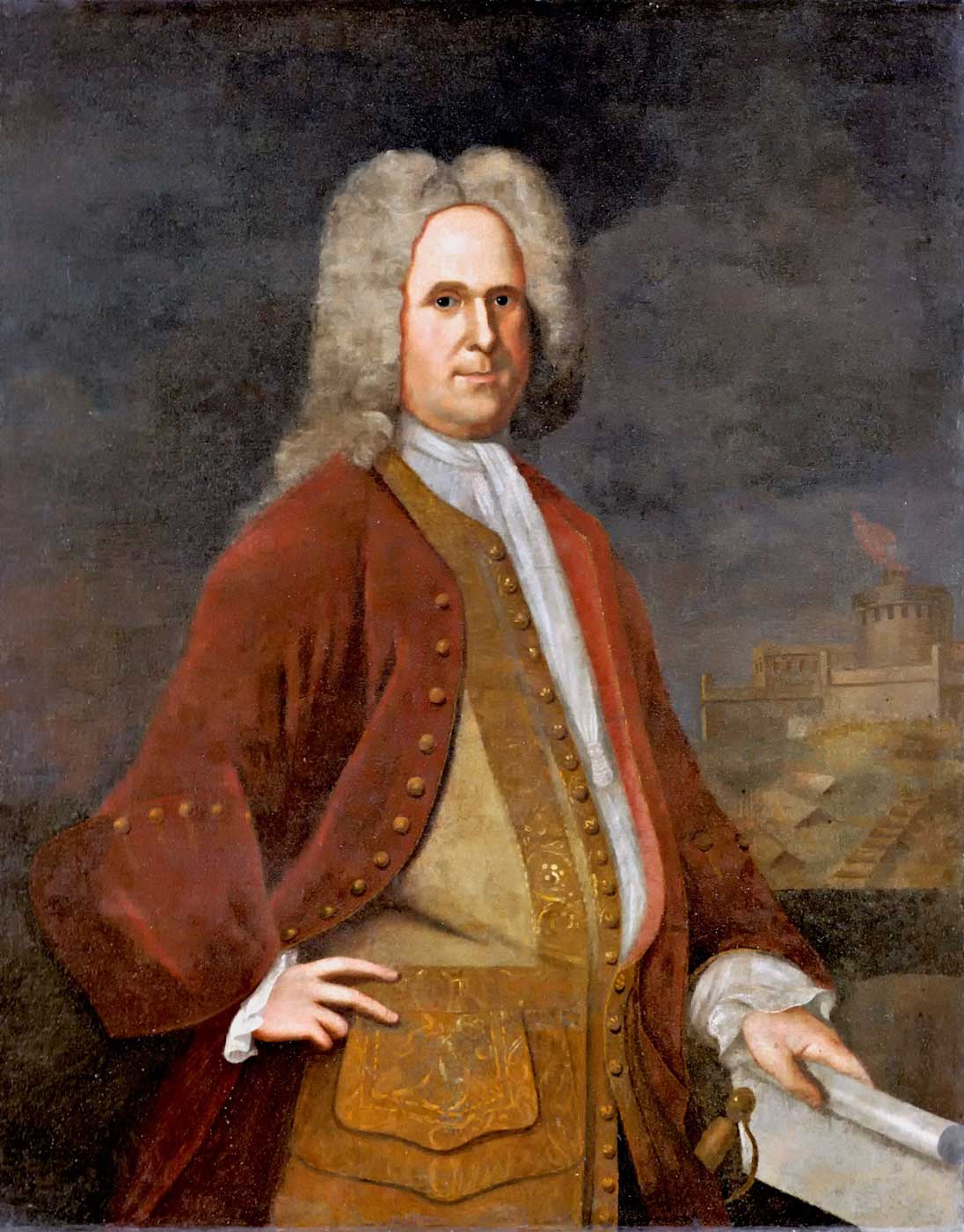
The final completion, which included the formal gardens, did not occur until 1722. Additional improvements were undertaken in 1749, when the ballroom and supper room wings were added to the rear of the main Palace. Interior finishes, such as mantels and woodwork, also received updates. When Lieutenant-Governor Robert Dinwiddie moved into the Palace in 1752, the new spaces for public entertaining allowed him to host a ball in honor of the King’s birthday. Governor John Murray, the Earl of Dunmore, the last royal governor to live in the Palace, fled from the Palace after tensions in Williamsburg escalated as a result of his ordering the seizure of gunpowder from the Magazine. Governors under the Commonwealth, Patrick Henry and Thomas Jefferson, both resided in the Palace. The executive residence was vacated in 1780 when the capitol of Virginia moved to Richmond. In 1781, the Palace served briefly as a hospital for Revolutionary War soldiers wounded in battle before burning to the ground on December 22.
By the end of the eighteenth-century, all that remained of the Governor’s Palace were the ruins of the main structure, the two Advance Buildings and various outbuildings. Williamsburg residents converted the two Advance Buildings into private residences. During the Civil War, looters reduced the Advance Buildings to heaps of rubble.
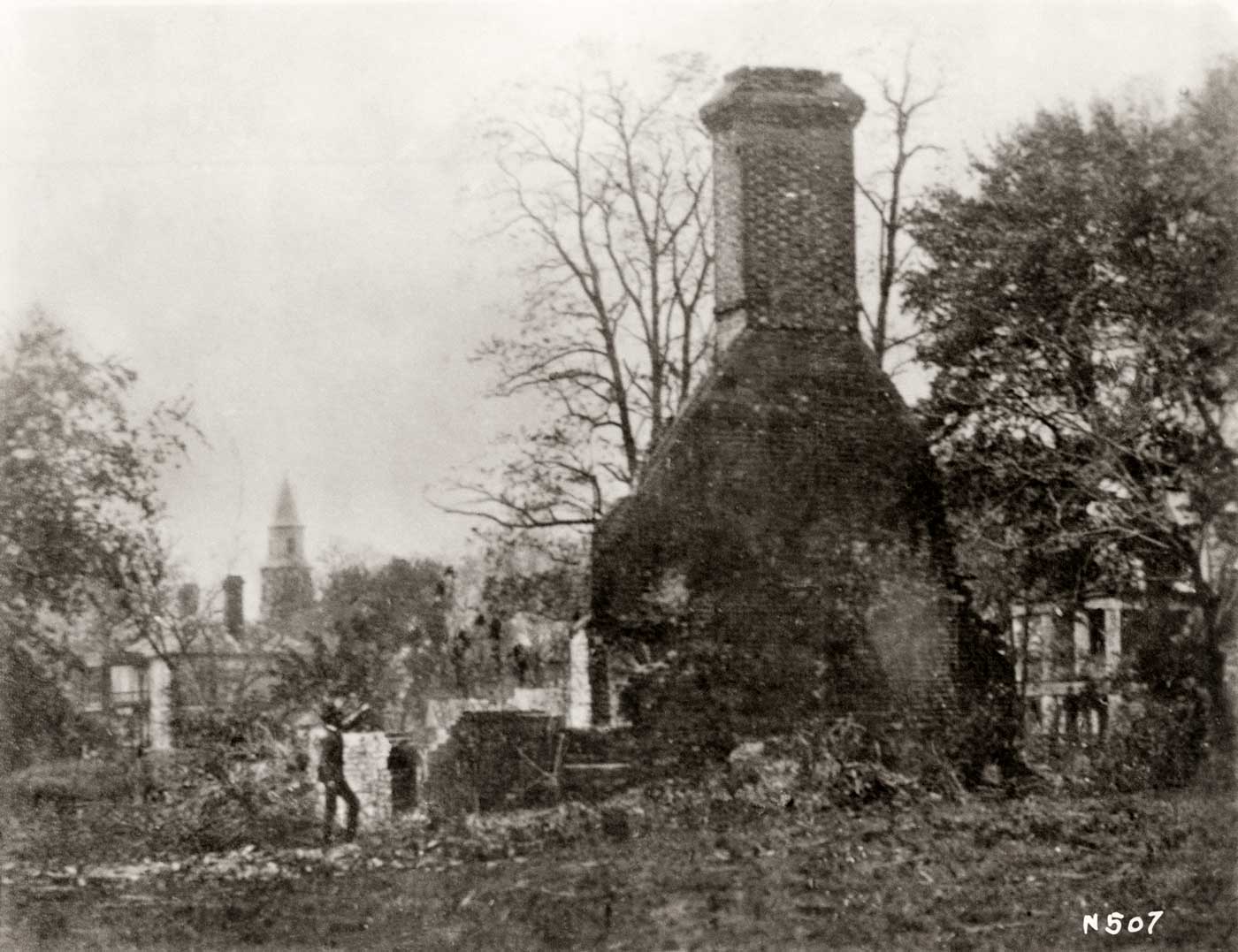
In 1870, the College of William & Mary erected Mattey’s Observation and Training School over part of the Palace foundations. At the turn of the century, Williamsburg began ushering in many modern businesses and several were constructed around the Palace site. A steam laundry and a knitting mill opened in 1900 and were soon followed by Denmead’s Ice Factory and Collins Cleaning Company. By the late 1920s, the Palace site encompassed a complex of businesses and schools, including the Virginia Electric and Power Company and Williamsburg High School. Reconstruction of the Palace on its original foundations began in December 1931. In April 1934, the Governor’s Palace opened to the public as an exhibition building.
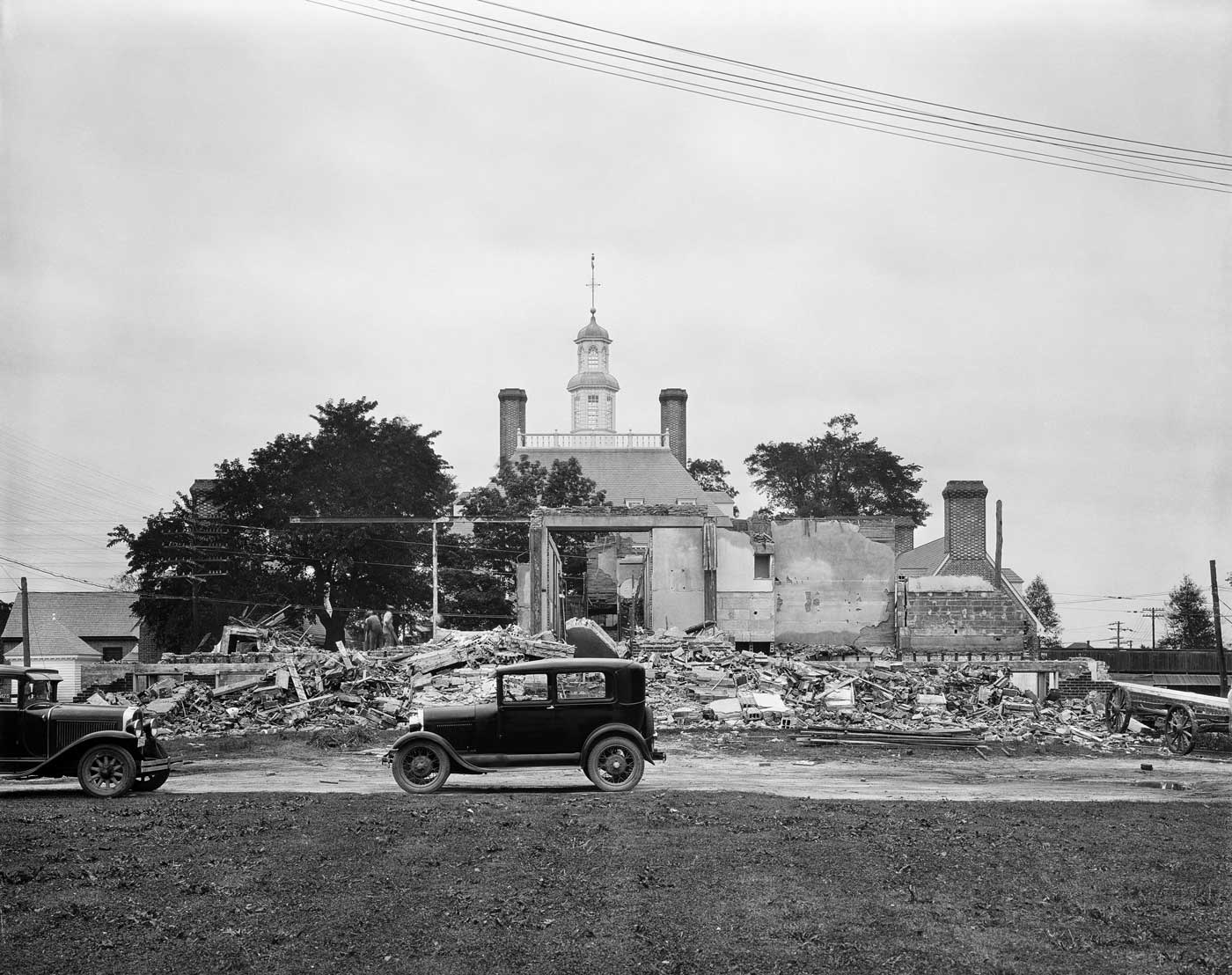
Items on display in the four cases to illustrate the Palace’s evolution begin with manuscripts relating to several of the governors and lieutenant-governors who resided there. Manuscripts range from a commission signed by Lieutenant-Governor William Gooch on August 21, 1740, documenting Benjamin Waller’s appointment as Clerk Assistant for the House of Burgesses, to Thomas Jefferson’s letter to the Board of Trade, March 23, 1780, discussing plans for moving executive records and furniture to the new capital in Richmond. The second case details archaeological investigations at the Palace site focusing upon the Palace cellar, the one portion of the main structure that survived the fire. Excavators removed debris to uncover artifacts remaining from the building’s collapse. They included a ceramic creamware wine cooler believed to be part of a table service listed in the 1770 probate inventory of Norborne Berkeley, Baron de Botetourt, Lieutenant-Governor of the Virginia Colony, and an armorial porcelain plate from the dinner service of Governor Dunmore, the last royal governor to reside in the Palace.
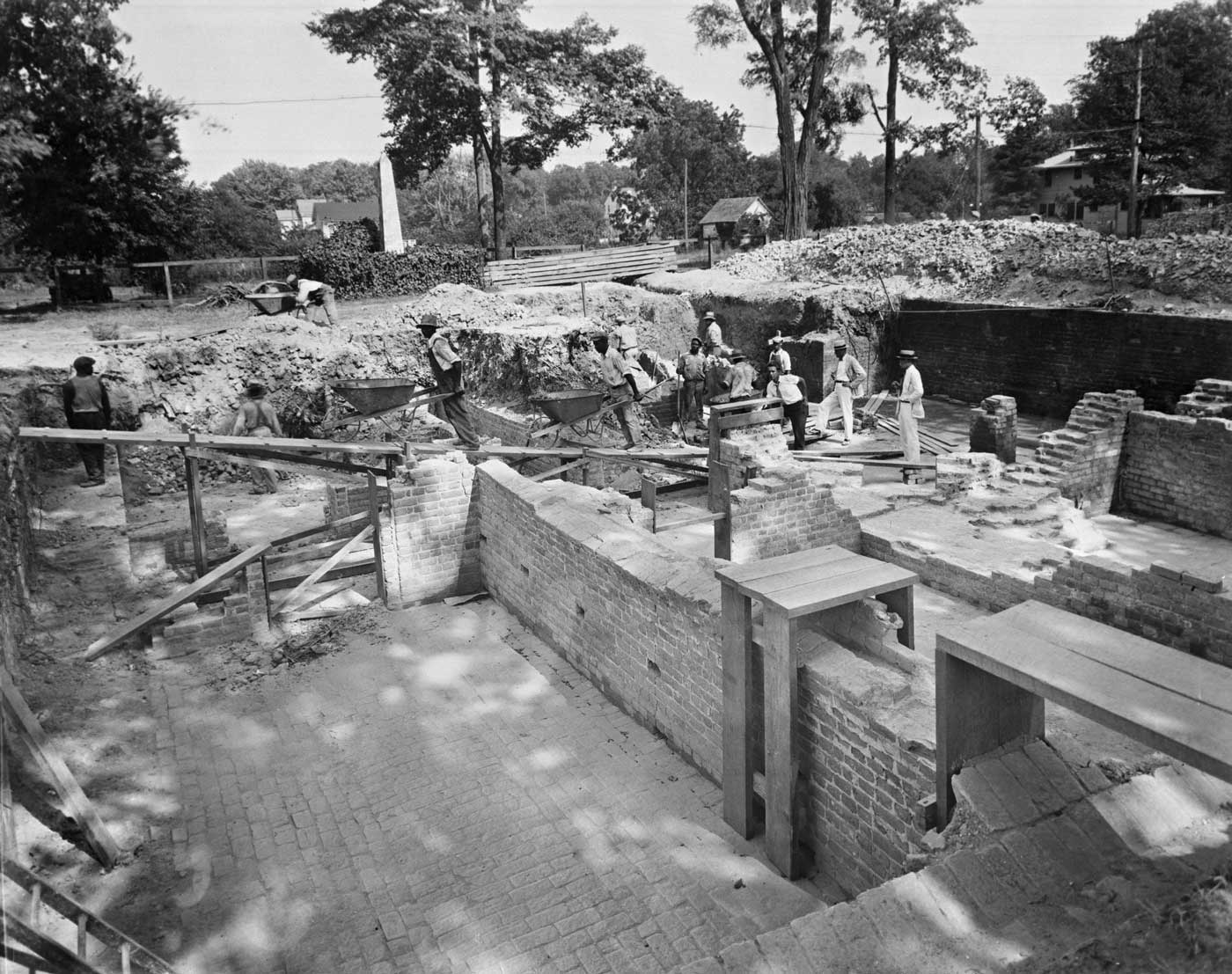

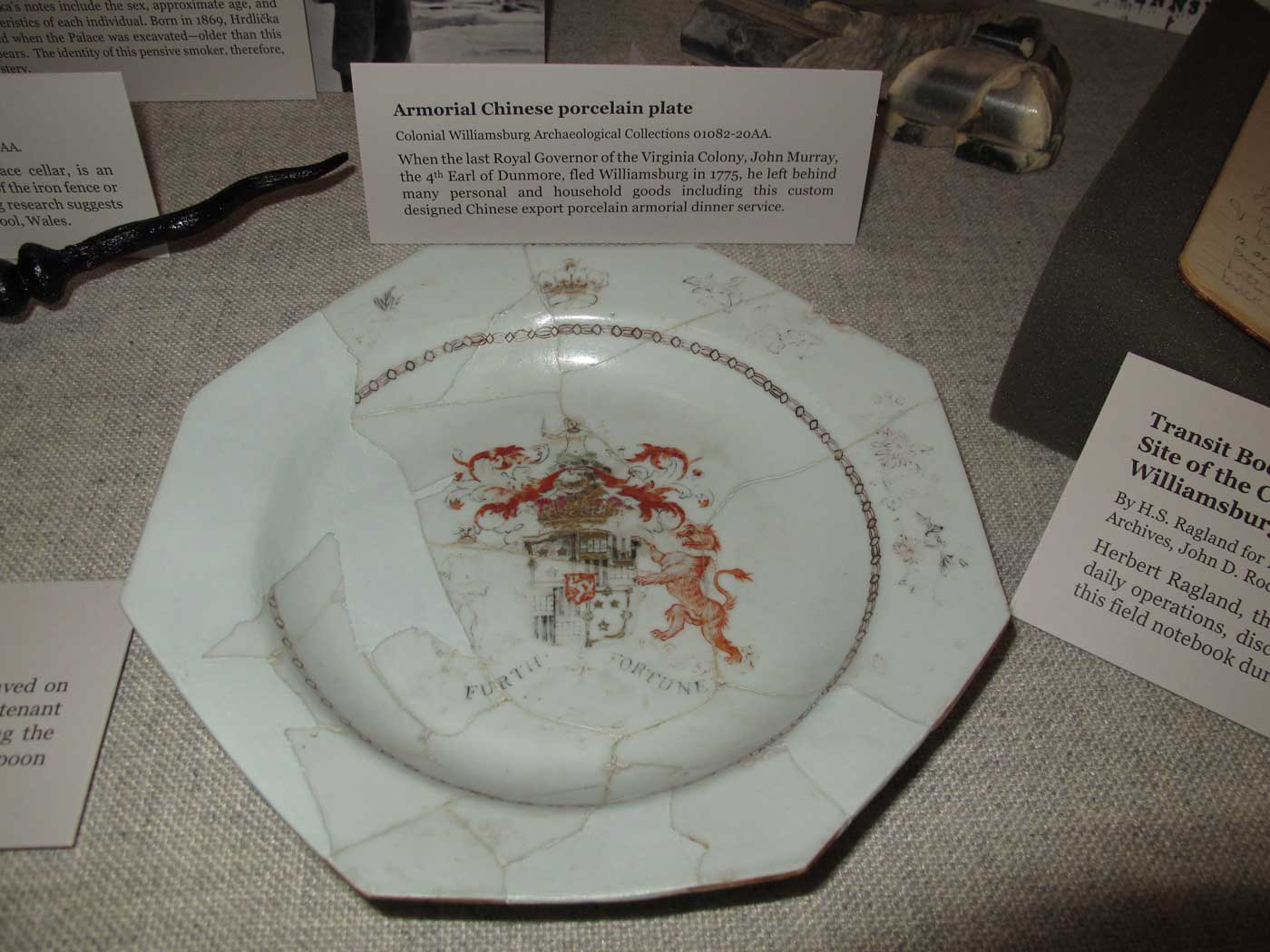
The third case focuses upon the architectural design of both the original Palace structure and its reconstruction in the 1930s. A modern strike of an engraved copperplate originally found in the Bodleian Library provides details about the appearance of the Palace that were essential for its proper reconstruction. One of architect Singleton Peabody Moorehead’s sketchbooks of architectural details is also on display showing his drawings of wall bricks and a surviving gate finial. The final case, detailing the pre-restoration site, reconstruction and opening, includes many archival photos of the remains of the Advance Buildings and various businesses once located on the Palace site. Architectural drawings, photos, memos, and reports document the meticulous two-and-a-half-year recreation of the Palace complex and gardens. Early special events at the Palace, such as the Palace concert series inaugurated in 1938, and the visit of Winston Churchill and Dwight D. Eisenhower in 1946, are highlighted via photographs, programs, and a guest book. Additional archival photos of the demolition of the Williamsburg High School on the Palace site and reconstruction of the Palace in its place can be viewed via a slideshow on the exhibit monitor that rotates through a series of historical images.
The Rockefeller Library is located at 313 First Street in the Bruton Heights School Education Center. It is open Monday through Friday, 9:00 a.m. – 5:00 p.m. Appointments are not necessary to view the exhibit, but visitors must ring a doorbell at the front entrance to gain admittance. The exhibit will be on display for six months through April 2020 and is free and open to the public.
